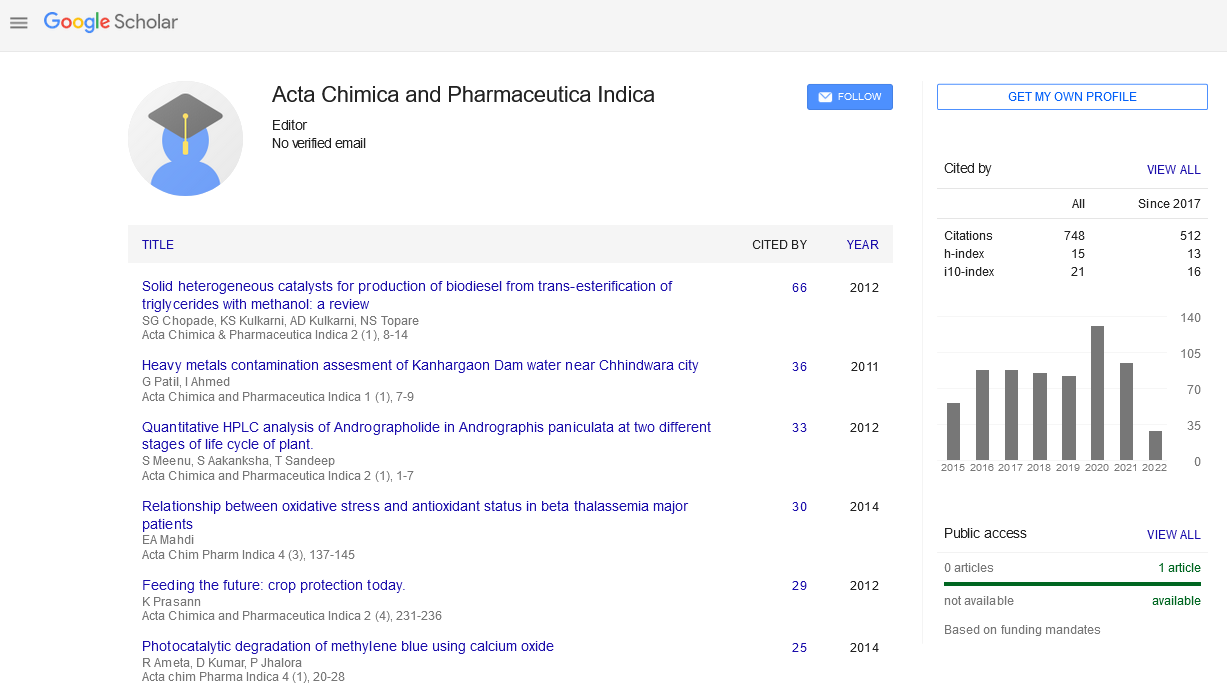Abstract
Synthesis, Characterization and Theoretical Studies of [(4-amino-5-(2-(6-methoxynaphthalen-2-yl)piperidino)-1,2,4-triazole-3-thion] with Co(II), Ni(II), Cu(II), Zn(II) and Cd(II) Metal Ions
Author(s): Adil A. Awad, Rehab A. M. Al-Hasani, Emad A. Yousif and Sura Kaleel IbrahimA new ligand (4-amino-5-(2-(6-methoxynaphthalen-2-yl)piperidino)-1,2,4-triazole-3-thion (L), was synthesized by treating 2-(6-methoxynahthalen-2-yl) propanoic acid) hydrazides successively with alcoholic potassium hydroxide-carbon disulfide and hydrazine hydrate. It was characterized by using FT-IR spectroscopy, UV-visible spectroscopy, C. H. N. S, G. Mass, and 1H-NMR spectroscopy. The prepared complexes with Co(II), Ni(II), Cu(II), Zn(II) and Cd(II) metal ions were characterized quantitatively and qualitatively by using: micro elemental analysis, FT-IR spectroscopy, UV-visible spectroscopy, C. H. N. S., magnetic susceptibility and conductivity measurements. Structural geometries of complexes were suggested in solid state and in gas phase by using theoretical treatments, using (Hyper Chem. 8) program for the molecular mechanics and semi-empirical calculations. The heat of formation (ΔHo f) and binding energy (ΔEb) for free ligand (L) and their metal complexes were calculated by PM3 method at 298 K. Furthermore, the electrostatic potential of the free ligand (L) was calculated to investigate the reactive sites of the molecules. PM3 was used to evaluate the vibration spectra of the free ligand (L) and its metal complexes, and the theoretically calculated wave numbers were compared with the experimented values. The theoretically obtained frequencies agreed well with those found experimentally, and in addition, calculations helped to assign unambiguously the most diagnostic bands. Bond length were calculated by using PM3 method

